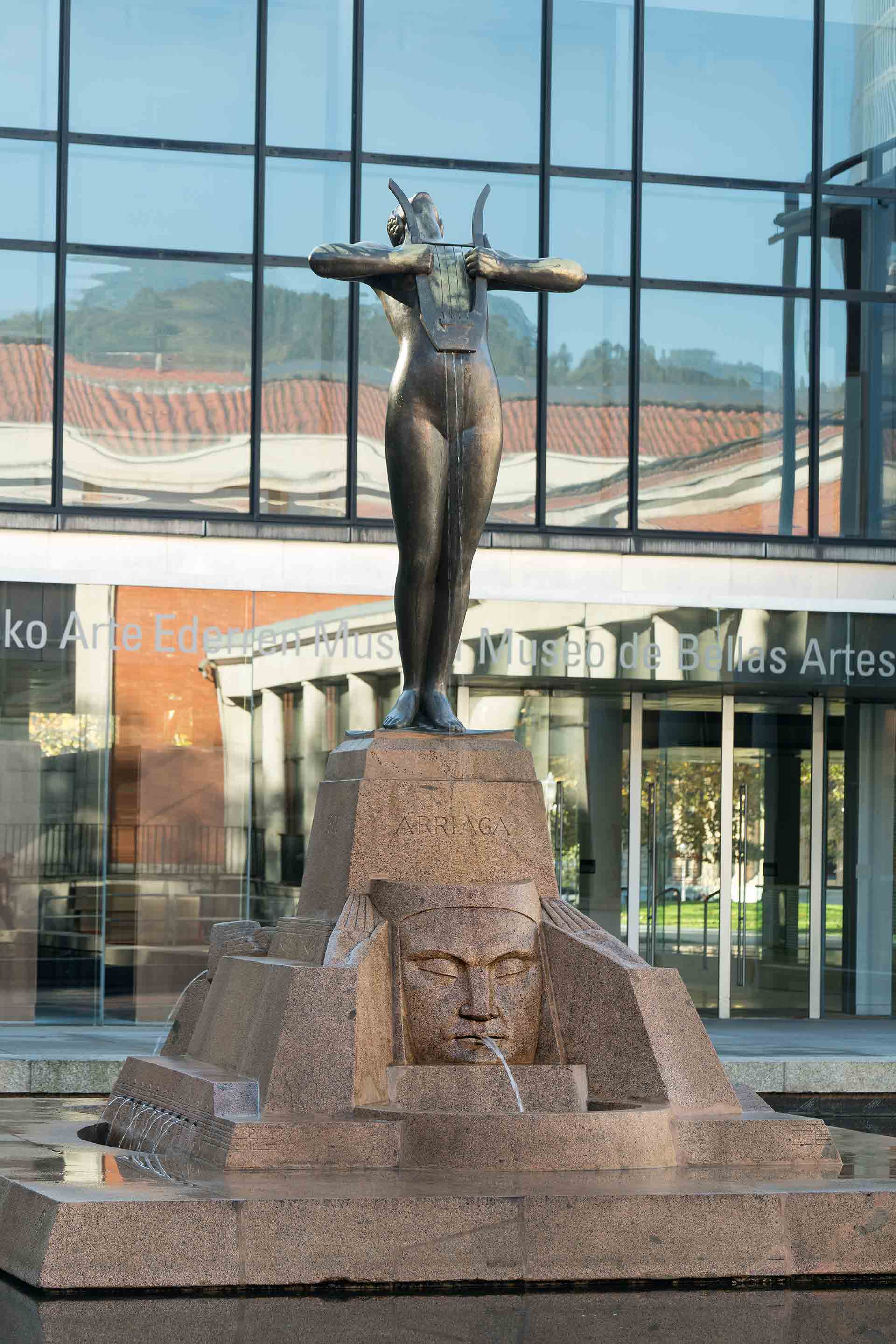PACO DURRIO: BILBAO-PARIS CONNECTION
Paco Durrio (b. 1868; d. 1940) is the son of basket weavers from Bilbao's Calle de la Ribera. He goes off to Paris in 1884, and only comes back to visit. His studio became a Bilbao consulate of sorts in Paris, for all subsequent generations of artists. Durrio is the artist who passes on Paul Gauguin's creative torch (who named him executor in 1895) to the young Pablo Picasso, whom he nurtures upon the latter's arrival in Paris in 1901, for he sees in him a genius in the making; so do Francisco Iturrino and Darío de Regoyos.
In 1894 Durrio is part of Paul Gauguin's circle of close friends, sharing the same studio. When Gauguin sets off on his last trip to Polynesia, in 1895, he leaves Durrio in charge of caring for all his work. Durrio offered it to The Bilbao Fine Arts Museum on numerous occasions; the Echevarrieta family acquired Bonjour, Monsieur Gauguin (today in Prague's National Museum) and the portraits of Dutch painter, Jacob Meijer de Haan, an oil on wood (Museum of Modern Art, New York) and another gouache on canvas, whose title includes the word Nirvana (Wadsworth Atheneum Museum, Hartford). A reminder of their mutual friendship is also apparent from the portrait that, seven years after their farewell at the Paris station, Gauguin made of Durrio in the faroff Marquesas Islands, entitled The Guitar Player (ca. 1900). Gauguin opens the way to three reflections: a gaze to the South Seas (towards objects from other cultures), the use of painting on objects (that is, a new approach to the meaning of sculpture), and taking into account minor arts, such as ceramics. In the 1905 special summer issue of the literary magazine, Le Mercure de France, Durrio is one of the artists who writes about the importance of Gauguin for 20th century art.
Paco Durrio transmits that creative fire of Gauguin's visual thought to the young Picasso, who had just landed in Paris in 1900, and to whom he offers his apartment at the Bateau-Lavoir in 1904, where Picasso, with his help, made his first clay and bronze sculptures. Durrio teaches him clay modeling and the use of fire and its effect on pigments. Fernande Olivier, Picasso's partner at the time, in her book Picasso and His Friends, relates how Durrio secretly fed them at the time. Picasso dedicates the painting Dutch Girl "to my dear friend Paco Durrio." And Picasso’s Boy Holding a Blue Vase, which belonged to Durrio, represents a kid holding one of Durrio’s vases. According to John Richardson, Picasso's biographer: "The extent to which Durrio's techniques helped Picasso revolutionize the craft of ceramics in Vallauris 40 years later has yet to be taken into account." Durrio was one of the pioneers in associating primitive art with the avant-garde, stressing the autonomy of fire ceramics, as well as equating silversmithing with sculpture.
Durrio’s monument to the Bilbao-born composer Juan Crisóstomo de Arriaga (b. 1806; d. 1826) is one of the most outstanding public sculptures done in Spain in the 20th century. The work is not a portrait of the composer, but rather a monument—in the true etymological sense of the word, from the Latin monere, to warn and remind—conceived as an ensemble that serves as a symbol of remembrance for the composer: the figure of a woman in bronze elevates a song and weeps the composer's premature death and her tears flow into the pond; the image confers life. Durrio recasts the meaning of the monument by replacing Arriaga with the figure of a muse on an ensemble of pedestal and water, with references—in Gauguin's style—to other cultures and their symbols.


